Tube Fest Talk, Part II
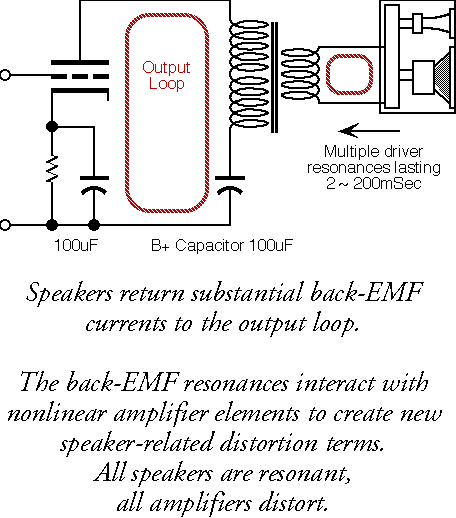
The first two charts are a commercial speaker I measured a few years ago on MLSSA, and the second pair are the Ariels. I don't mean to hurt anyone's feelings, but horn speakers usually measure worse than the first pair of charts. Although the time response of high-efficiency speakers is problematic (due to reflections from the edge of the horn mouth), there's an important compensation: the IM distortion is typically ten times better than direct-radiators. So horns will favor some types of music and not favor others.
In general, efficiency and low IM distortion come at the price of more resonant impulse response. Not the leading edge of the impulse, which only affects the high-frequency limit, but the stored energy on the trailing edge, which affects impressions of speaker coloration and resulting back-EMF resonances fed back to the amplifier. As you can see below, there's a very good technical reason why horns and transistor amplifiers are a bad idea.
To improve the time response of horns (again, this is not related to linear-phase crossovers or the leading edge of the impulse), treatments to "smooth out" the hard edge of the horn (Tractrix profile, felt strips) can be extremely effective at only 1 dB cost in efficiency. Going further, some prototype horns have acoustically transparent diaphragms, such as horn-electrostats or even more exotic, horn-ionic speakers. Of course, that's a topic for a whole different talk ...

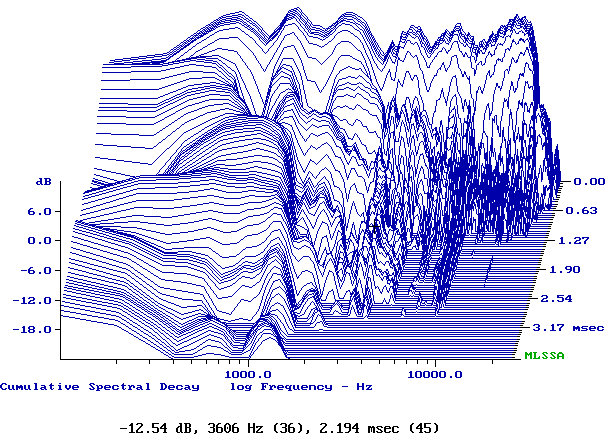
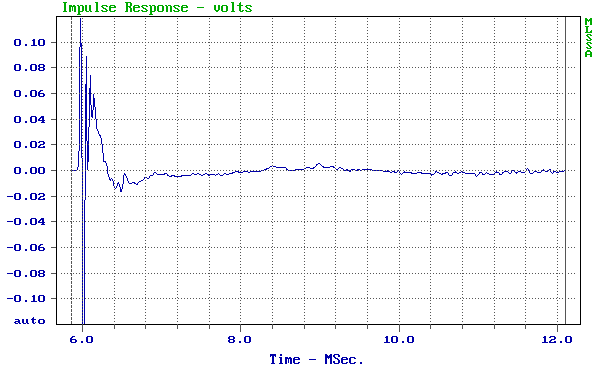
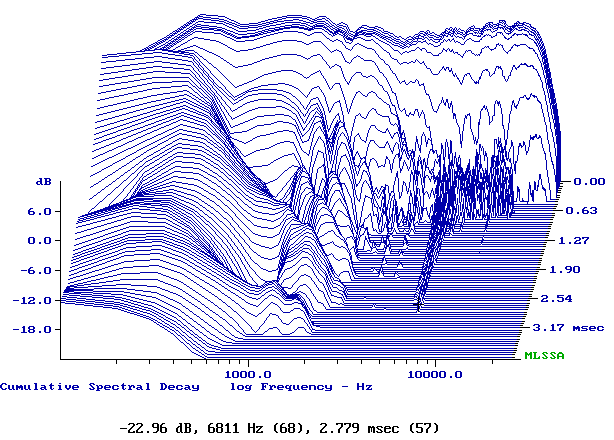
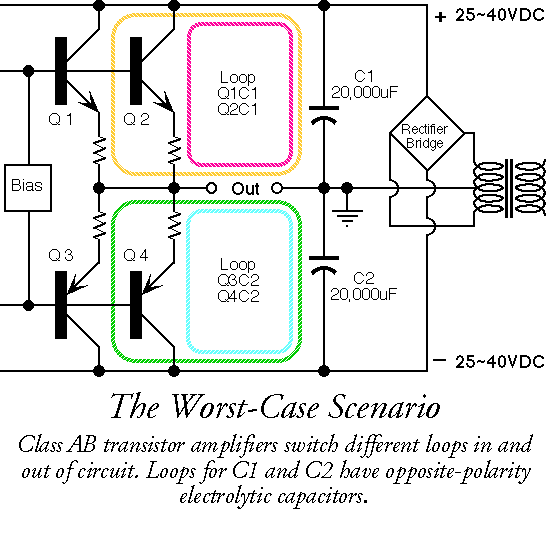
The horror! The horror! 99.9% of all transistor amps have this output topology - high-priced amps have lots more transistors, each drifting around thermally and finding it's own Class AB transition point, and all of the multiple loops going through banks of "computer-grade" electrolytics, sometimes as large as 120,000uF. The circuit is only "direct-coupled" if you ignore the high-noise, high-coloration power supply - which is usually conveniently drawn on a separate part of the schematic. In the real world, the plus and minus power-supply leads radiate rectifier hash and Class AB switching pulses into the circuit board.
Speaker designers abandoned electrolytic caps back in 1980. But as you can see, they are in almost every transistor output stage. The only way around this is very rare - full regulation for the entire amplifier, not just the inputs and drivers. It's the outputs that need the regulation and isolation from the banks of electrolytics, but this is almost never done. The only transistor amplifier that I know that is fully regulated is the R.E. Designs LNPA-150 - which, by the way, doesn't sound like a transistor amp, but more like a very good triode amp.
But let's return to a more pleasant topic ...
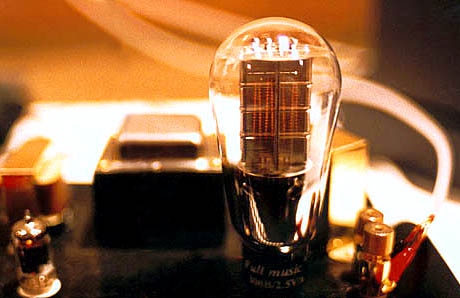

Here's some eye candy for making it all the way through the presentation - pictures I took of Tony Ho's and Josh Stippich's beautiful amplifiers at the VSAC 2001 show. Yes, there will be a VSAC 2003 in Silverdale, Washington, in the first week of October!
Text © Lynn Olson 2003. All Rights Reserved.